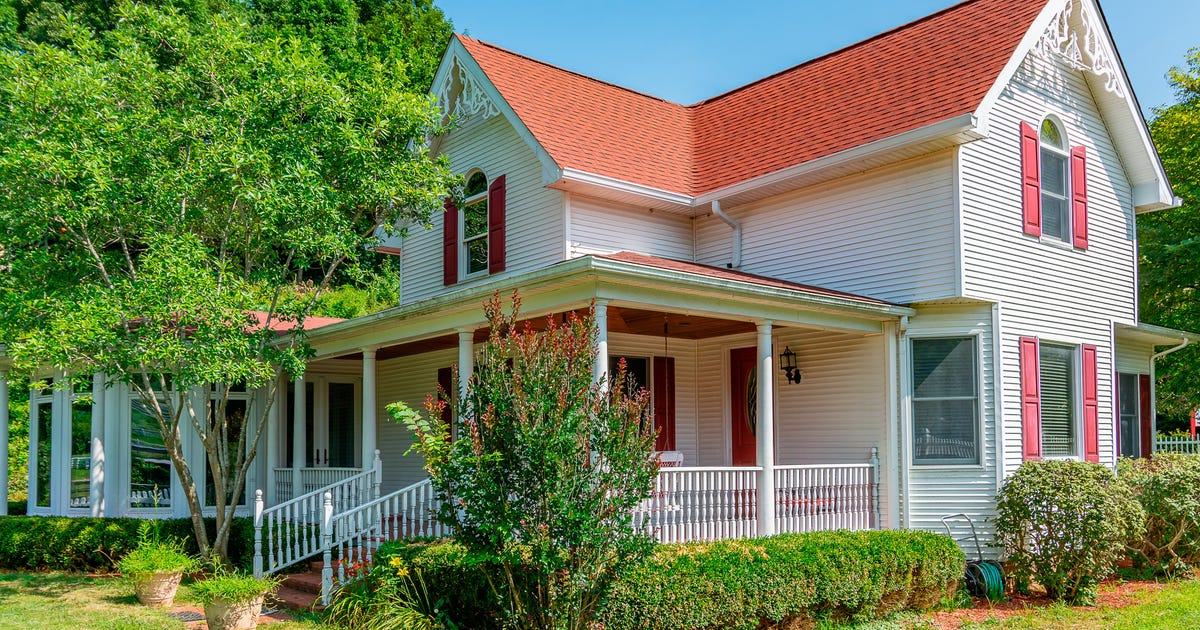
A couple of closely followed mortgage rates moved up today. 15-year fixed and 30-year fixed mortgage rates both moved up. For variable rates, the 5/1 adjustable-rate mortgage also cruised higher.
Mortgage rates have been slowly rising since the start of this year, and are expected to increase throughout 2022. Rates are now closer to 2018 levels than the historic lows seen during the height of the pandemic. Interest rates are dynamic — they rise and fall on a daily basis depending on economic factors. In general, now is a good time for prospective homebuyers to lock in a lower rate rather than later this year. Speaking with multiple lenders will help you find the best rate available for your financial situation.
30-year fixed-rate mortgages
For a 30-year, fixed-rate mortgage, the average rate you’ll pay is 5.57%, which is an increase of 9 basis points compared to one week ago. (A basis point is equivalent to 0.01%.) The most common loan term is a 30-year fixed mortgage. A 30-year fixed rate mortgage will usually have a smaller monthly payment than a 15-year one — but often a higher interest rate. You won’t be able to pay off your house as quickly and you’ll pay more interest over time, but a 30-year fixed mortgage is a good option if you’re looking to minimize your monthly payment.
15-year fixed-rate mortgages
The average rate for a 15-year, fixed mortgage is 4.81%, which is an increase of 8 basis points compared to a week ago. You’ll definitely have a bigger monthly payment with a 15-year fixed mortgage compared to a 30-year fixed mortgage, even if the interest rate and loan amount are the same. However, as long as you can afford the monthly payments, there are several benefits to a 15-year loan. These include usually being able to get a lower interest rate, paying off your mortgage sooner, and paying less total interest in the long run.
5/1 adjustable-rate mortgages
A 5/1 ARM has an average rate of 5.55%, an addition of 10 basis points compared to last week. For the first five years, you’ll typically get a lower interest rate with a 5/1 adjustable-rate mortgage compared to a 30-year fixed mortgage. However, you might end up paying more after that time, depending on the terms of your loan and how the rate adjusts with the market rate. If you plan to sell or refinance your house before the rate changes, an ARM may make sense for you. But if that’s not the case, you may be on the hook for a much higher interest rate if the market rates change.
Mortgage rate trends
While 2022 started with low mortgage rates, there has been a steady rise in recent months, and rates are expected to continue going up throughout 2022. Home loan rates are influenced by different economic factors. A major one is government policy set by the Federal Reserve, which raised rates in March for the first time since 2018 in response to record-high inflation. The Fed anticipates raising interest rates six more times this year, so if you’re looking to buy a house in 2022, you should be prepared for interest rates to keep going higher.
We use data collected by Bankrate, which is owned by the same parent company as CNET, to track rate changes over time. This table summarizes the average rates offered by lenders nationwide:
Current average mortgage interest rates
| Loan type | Interest rate | A week ago | Change |
|---|---|---|---|
| 30-year fixed rate | 5.57% | 5.48% | +0.09 |
| 15-year fixed rate | 4.81% | 4.73% | +0.08 |
| 30-year jumbo mortgage rate | 3.85% | 3.78% | +0.07 |
| 30-year mortgage refinance rate | 5.53% | 5.45% | +0.08 |
Updated on May 12, 2022.
How to find the best mortgage rates
You can get a personalized mortgage rate by connecting with your local mortgage broker or using an online calculator. When researching home mortgage rates, think about your goals and current finances. Specific mortgage interest rates will vary based on factors including credit score, down payment, debt-to-income ratio and loan-to-value ratio. Having a good credit score, a larger down payment, a low DTI, a low LTV, or any combination of those factors can help you get a lower interest rate. The interest rate isn’t the only factor that affects the cost of your home — be sure to also consider additional factors such as fees, closing costs, taxes and discount points. You should shop around with multiple lenders — including credit unions and online lenders in addition to local and national banks — in order to get a mortgage loan that’s the best fit for you.
How does the loan term impact my mortgage?
One important factor to consider when choosing a mortgage is the loan term, or payment schedule. The loan terms most commonly offered are 15 years and 30 years, although you can also find 10-, 20- and 40-year mortgages. Mortgages are further divided into fixed-rate and adjustable-rate mortgages. The interest rates in a fixed-rate mortgage are fixed for the duration of the loan. Unlike a fixed-rate mortgage, the interest rates for an adjustable-rate mortgage are only stable for a certain amount of time (most frequently five, seven or 10 years). After that, the rate fluctuates annually based on the current interest rate in the market.
One important factor to think about when choosing between a fixed-rate and adjustable-rate mortgage is how long you plan on staying in your house. For those who plan on living long-term in a new house, fixed-rate mortgages may be the better option. While adjustable-rate mortgages might have lower interest rates upfront, fixed-rate mortgages are more stable in the long term. If you aren’t planning to keep your new home for more than three to 10 years, however, an adjustable-rate mortgage might give you a better deal. The best loan term all depends on your own situation and goals, so make sure to take into consideration what’s important to you when choosing a mortgage.

